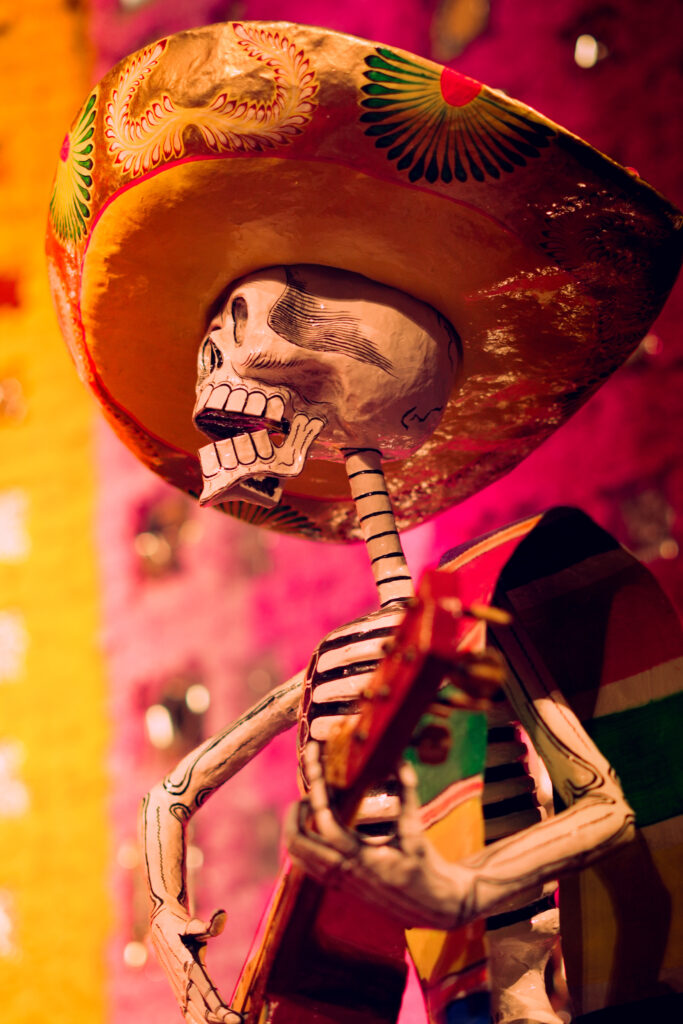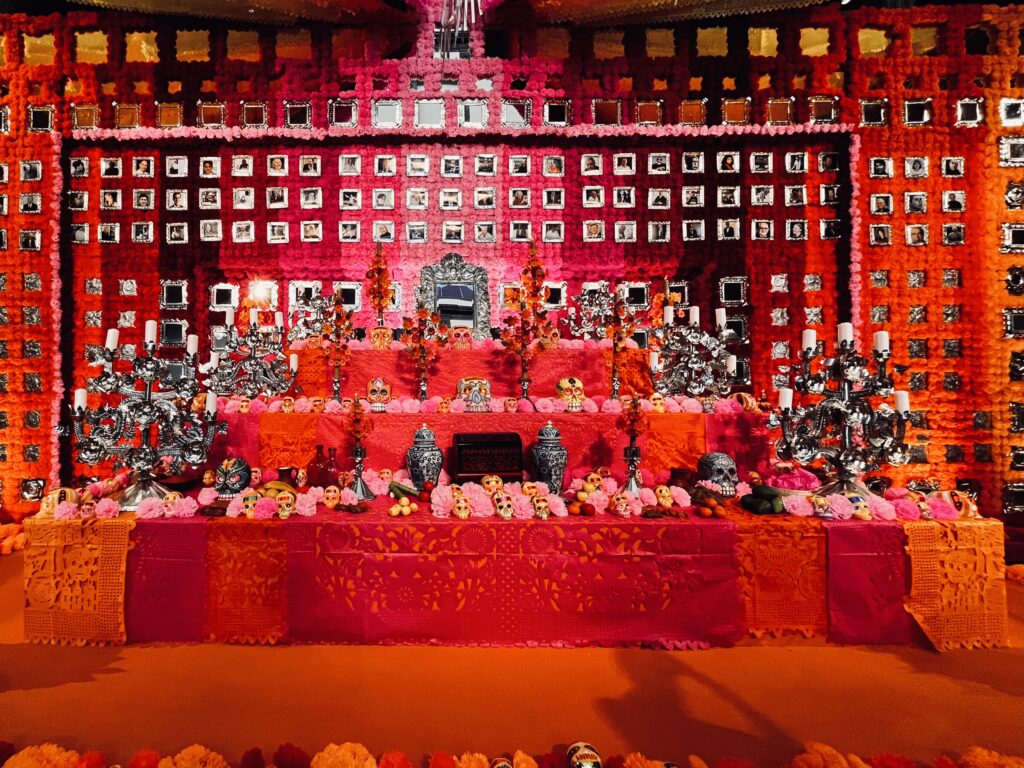The Monumental Altar of the Dead of Citibanamex in the Historic Center
We Tell You Everything
Exploring the Living Tradition of Day of the Dead Altars in CDMX
The Day of the Dead is a celebration deeply embedded in Mexican identity, a cultural manifestation that blends pre-Hispanic beliefs and Catholic elements, evolving into a symbol of Mexico’s richness and diversity. Far from being a moment of mourning, this festivity is celebrated with joy and devotion, honoring the memory of those who have passed away.
Day of the Dead Altars: A Tribute to Memory
In every corner of Mexico, Day of the Dead altars are the most visible and heartfelt representation of this tradition. In Mexico City, altars are meticulously set up in homes, public squares, and even iconic buildings. One of the most impressive is the monumental altar displayed annually at the Palacio de Cultura Citibanamex–Palacio de Iturbide. This year, the tradition continues with a tribute dedicated to over 120 people who collaborated with Fomento Cultural Citibanamex on various cultural projects.

A Monumental Altar: History and Art
This year’s Altar de Muertos, designed by Cristina Faesler, is an elaborate display of art and symbolism featuring collaborations from renowned artisans such as María Ayala and Leticia Sánchez Cuahuititla, who contributed beautiful paper flowers, and José Luis Cuevas, a master of cut metalwork. The altar also features works by other artisans who brought their expertise to create candelabras, scalloped candles, and embossed aluminum pieces.
This space serves not only as a tribute to the deceased who contributed to preserving and promoting Mexican culture but also as an exhibition of pieces from the Collection of Great Masters of Folk Art of Fomento Cultural Citibanamex. Visitors can admire traditional papier-mâché figures by the Linares family from Mexico City, majolica from César Torres’ workshop in Puebla, and a lacquered trunk from Olinalá, Guerrero, among other works.
Elements and Symbolism of the Altar
Day of the Dead altars, although varied in size and complexity, share essential elements. Candles represent the light guiding the souls of the departed, while the vibrant orange marigold flowers (cempasúchil) mark the path from the world of the living. The iconic pan de muerto symbolizes earth and fraternity. Water, a vital element, quenches the souls’ thirst after their long journey, and salt signifies purification.
Each detail of an altar holds purpose: photos of loved ones, sugar skulls, and even personal items serve as reminders of the importance of keeping family memories and traditions alive.
The celebration of the Day of the Dead not only keeps ancestral customs alive but also invites both locals and visitors to discover and appreciate how Mexican culture honors life through the remembrance of the dead. The altar at the Palacio de Cultura Citibanamex is a splendid example of how tradition adapts to modern times without losing its essence, showcasing the work of artisans and the ongoing narrative of history.


